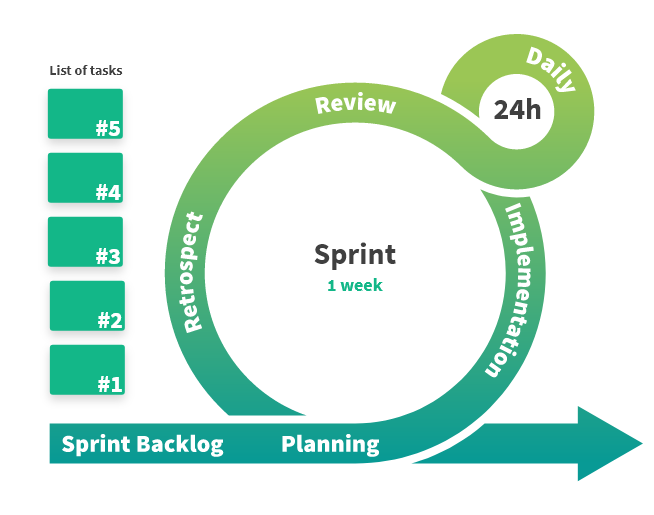Product Development Cycle: 5 Steps to Mastering the process
In today’s fast-paced, digital world it’s no longer enough to launch a new product without an end in sight. Companies must now think in terms of the entire product development cycle and how they can streamline their processes to shorten the time from idea to finished product. If you’re the CEO, manager, or lead engineer at your company, you know that launching new products as quickly as possible is critical to staying ahead of the competition. As a result, your team needs to adopt a more streamlined process that enables you to move from ideation to production and finally launch faster than ever before. To help give you an overview of the most effective ways to accelerate your company’s product development cycle, we’ve compiled these 5 steps:
Table of content
Table of Contents
In today’s fast-paced, digital world it’s no longer enough to launch a new product without an end in sight. Companies must now think in terms of the entire product development cycle and how they can streamline their processes to shorten the time from idea to finished product. If you’re the CEO, manager, or lead engineer at your company, you know that launching new products as quickly as possible is critical to staying ahead of the competition. As a result, your team needs to adopt a more streamlined process that enables you to move from ideation to production and finally launch faster than ever before. To help give you an overview of the most effective ways to accelerate your company’s product development cycle, we’ve compiled these 5 steps:

Step 1: Define your target market and product requirements
The first thing you need to do is take a step back and define the product requirements and your target market. Why have you decided to launch this product? What problem does it solve for your customers? What will make your customers’ lives easier? How does your product fit into your company’s overall strategy?
For example, let’s say your company has decided to develop an app that allows users to book appointments with stylists at nearby salons. Once you’ve decided to launch this app, you need to define your product requirements so that your team can know what they’re working towards. This may include:
- What are the demographics of your target market?
- How many people do you expect will use this app?
- What types of appointments will users be booking?
- Where are your users currently booking appointments?
- What features will help your users get an appointment faster?
Step 2: Build your app with an MVP
After defining product requirements, develop a Minimum Viable Product (MVP) by pinpointing features that expedite reaching target markets and requirements. This approach swiftly assesses design, functionality, and overall experience investment worthiness. For instance, when creating a salon appointment booking app, begin with a basic web page offering two options: Find a salon near me or enter my location. With the MVP ready, gather potential customer feedback and employ tools like Hotjar or Intercom to gauge feature engagement.
Step 3: Test assumptions with User Research
Once you have released your minimum viable product and received feedback from customers, it’s time to test your assumptions. What do your clients desire? What do they want in terms of characteristics, issues, and frustrations? Assuming that you created an app with simple design and functionality, have you assumed that you would be inundated with appointments? If your customers inform you that they find the app too difficult to use, you must begin to assess your beliefs.
Throughout your launch, you want to make sure you’re getting feedback from as many people as possible. This means talking to your customers and conducting user research through surveys, interviews, and other forms of feedback. With the amount of software and tools available for startups, collecting feedback has never been more efficient. You can use software like Typeform or Google Forms to create and distribute surveys, or use a tool like UserTesting to conduct video interviews.
Step 4: Leverage Data with A/B Tests
Following A/B testing and customer feedback, identify effective elements and areas for improvement. This evaluation optimizes product development by determining features to retain, modify, or remove.
Seed and venture capital funding finance business operations, including new products and existing enhancements. Traditionally available to businesses with a physical presence, the growth of e-commerce and the internet has expanded funding to online ventures.
During product development, attentiveness to metrics is crucial. Monitor key performance indicators (KPIs), identify increasing product usage, stagnant metrics, and customer challenges. Assess the intended problem-solving aspects of the product. This vigilant analysis streamlines the identification of successful and unsuccessful components, aiding in decision-making for feature retention or enhancement.
Step 5: Identify what worked and what didn’t
Post A/B testing and customer feedback, identify effective aspects and areas needing improvement. This evaluation refines the product development process, determining feature preservation, modification, or removal. Seed and venture capital funding finance business operations, including new products and existing enhancements. Previously limited to businesses with a physical presence, e-commerce and internet growth expanded funding to online ventures.
During product development, attention to metrics is essential. Monitor KPIs, recognize increasing product usage, stagnant metrics, and customer challenges. Consider problems the product aims to solve. Monitoring metrics streamlines identification of successful and unsuccessful components, facilitating decision-making for feature retention or enhancement.


